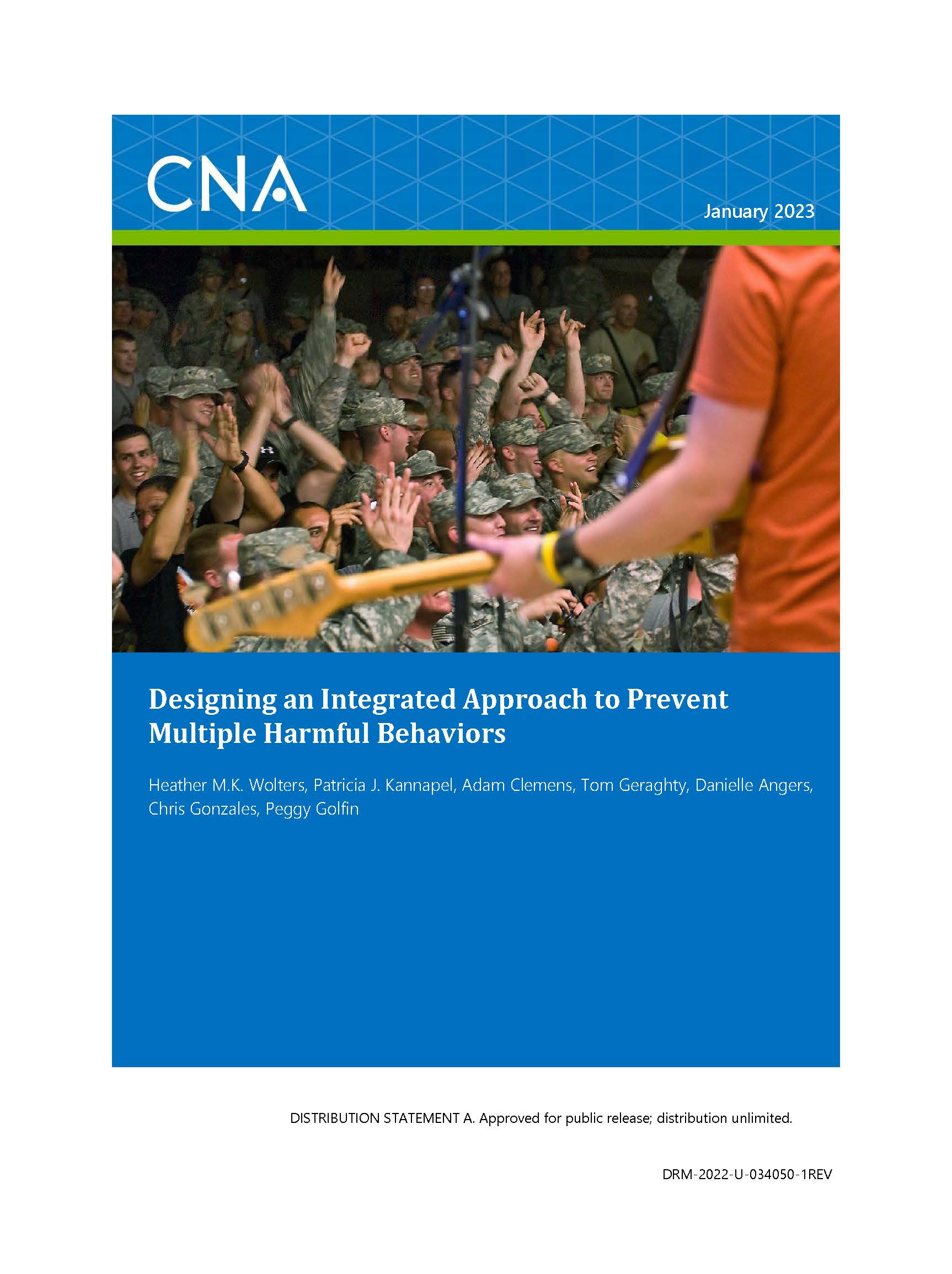The Department of Defense is promoting an approach to primary prevention of multiple harmful behaviors that addresses risk and protective factors associated with these behaviors in an integrated manner, while maintaining important prevention activities that are unique to specific harmful behaviors [1-2]. Accordingly, the Army Resilience Directorate (ARD) asked CNA to help develop an integrated prevention approach for the Army. CNA began by developing a socioecological model (SEM) specific to the Army. The SEM includes influences on behavior at individual, interpersonal, unit, installation/local community, Army, and society levels. While developing the Army SEM, CNA identified risk and protective factors that are shared among multiple harmful behaviors (suicide, substance abuse, domestic violence, sexual harassment/assault, discrimination, and extremism) at each SEM level and identified principles of effective prevention. Next, CNA evaluated nine Army prevention programs and described the extent to which each program aligns with the Army SEM, principles of effective prevention, and relevant career touchpoints.
This report builds on findings from the previous phases of this study to develop an integrated prevention approach. Specifically, the first phase of this research identified high-leverage risk and protective factors that apply to three or more harmful behaviors. Several of these highleverage factors are built into the resulting integrated prevention approach. Further, the earlier phases of the research highlighted conflicting norms surrounding primary prevention. For example, alcohol misuse is identified as a high-leverage risk factor; however, some units within the Army perceive excessive drinking as condoned and expected behavior. As part of the barrier analysis in this phase of the study, we further explored these conflicting norms. Finally, the principles of effective prevention identified in earlier phases provided important criteria to build into the final recommended integrated prevention approach.
Download reportDISTRIBUTION STATEMENT A. Approved for public release; distribution unlimited.
Details
- Pages: 106
- Document Number: DRM-2022-U-034050-1REV
- Publication Date: 1/31/2023
